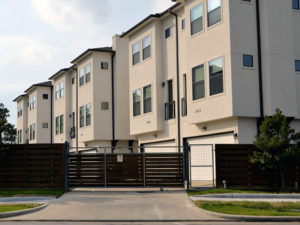Rising Housing Prices – What does the future hold?

The good news in early 2022 was an apparent slowdown in the runaway home sales prices that had characterized the previous year. Homes that consistently sold for over the asking price seemed to be on the market longer, and there were fewer bidding wars. On the other hand, rising interest rates proved that it can still be difficult for potential buyers to trade rent payments for mortgages. Although the higher prices and rising rates have moderated demand somewhat over the past six months, it now seems clear that the desire to buy continues to be strong. In addition, prices for rental homes and apartments continue to rise, and will perhaps reach record highs before the end of the year.
What does this mean for the housing market in general? For some experts, it is a worrisome trend. For others, though, the fact that there are now more homes available for sale is a positive sign, and sales statistics are evidence that buying is still a good move.
The July 2022 Apartment List National Rent Report shows that rents climbed by 5.4% during the first six months of the year. During the same period in 2021, the increase was 8.8%. Perhaps not surprisingly, New York City holds the record for the highest rental rate increase. Sun Belt cities may find prices leveling for the remainder of the year. But rental prices are still rising faster than during the pre-pandemic years.
In other statistics, the report showed that 97 of the country’s 100 largest cities have seen rent increases during this six-month period, but that the increases were less than during 2021 in 73 cities. Analysis of rental market statistics by Realtor.com confirms that month-to-month increases continue to be posted in markets throughout the nation, and that the median rent in the top 50 American cities reached record numbers for “the 15th month in a row.”
The typical rent for a one or two-bedroom rental house was $1,849 in May, and is expected to reach $2,000 in some markets as early as October. Studio apartment rent is also climbing at record rates.
What Does the Future Hold?
A promising sign in most markets is that housing inventory currently exceeds the number of buyers. It is hoped that the recent frenzied bidding wars may become past history. But with rates inching up to between 6.5 and 7%, the cost of buying is definitely increasing. Potential buyers must also consider the additional costs of home ownership, and plan wisely for long-term home ownership.
Analysts caution potential buyers to be more realistic about their needs, and to stay below the upper limits of their affordability range. Some recommend renting for an additional six to eight months to build a more substantial down payment, while others suggest locking in a rate with a lender as early as possible in their home search.
Escalating inflation also impacts the real estate scene. Investors and sellers may view higher prices as beneficial, while builders, buyers and renters are certain to pay more. Existing real estate will no doubt be worth more than it is currently, and the return on real estate investments also seems destined to increase. Most financial advisors still view such investments as a worthwhile hedge against inflation, whether you buy a home, or invest in real estate in another way.
Your personal financial situation and point of view will determine how you look at housing for the rest of this year, and for the future. But there is widespread agreement, now as in the past, that real estate is a wise investment.
Sources
https://www.noradarealestate.com/blog/rental-prices/
https://smartasset.com/mortgage/how-rising-interest-rates-impact-buying-vs-renting



